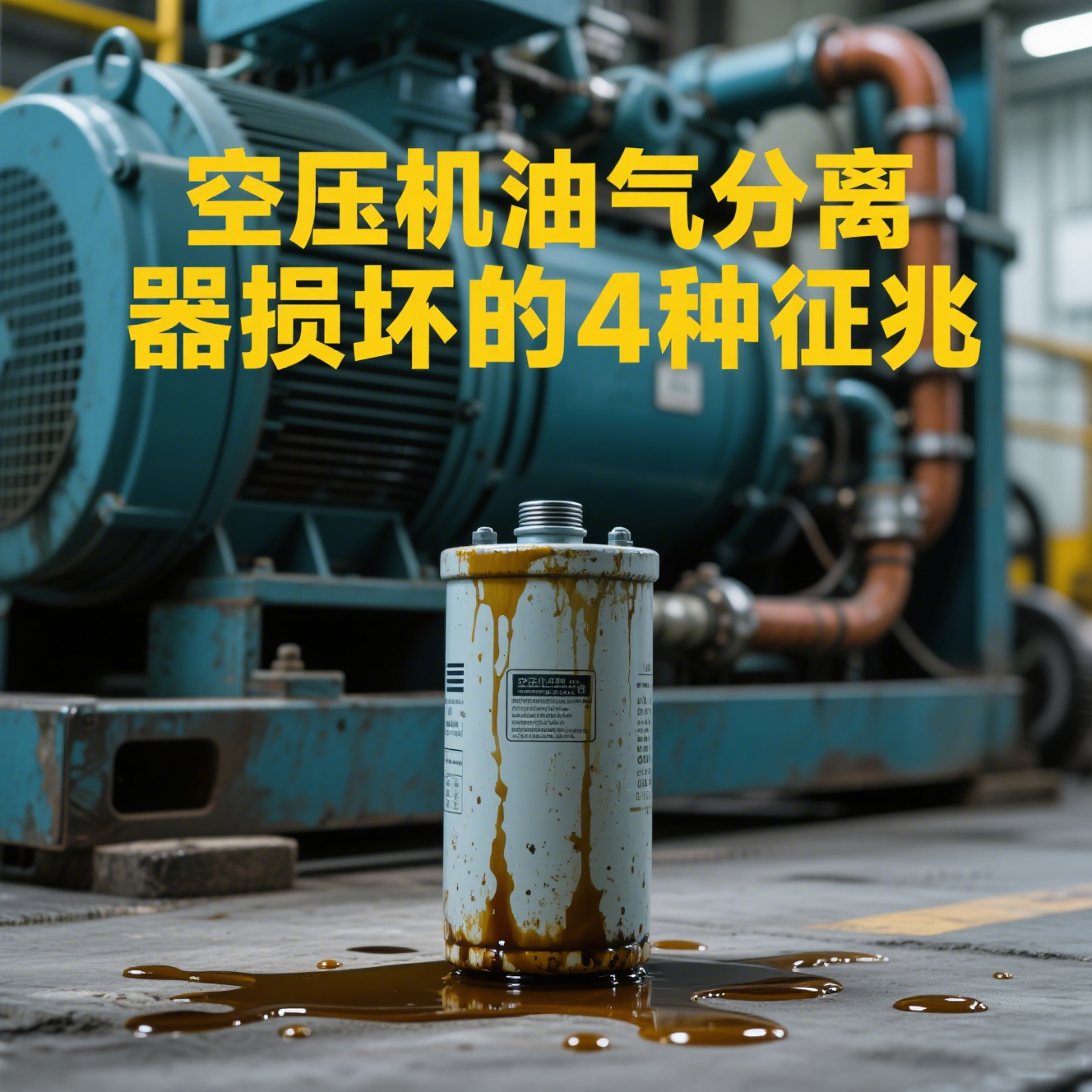The oil-air separator of an air compressor is like the “health guardian” of the equipment. Once damaged, it not only affects the quality of compressed air but may also lead to equipment malfunctions. Learning to identify the signs of its damage can help you detect problems in a timely manner and reduce losses. Here are 4 common and obvious signals:
Sudden increase in oil content in exhaust air
In a normally operating air compressor, the compressed air discharged contains very little oil. However, if the oil-air separator is damaged, the lubricating oil cannot be properly separated and will be discharged along with the compressed air. The most intuitive sign is that when a piece of white paper is placed near the exhaust port for a while, obvious oil stains will appear on the paper. Or, a large amount of oil stains will start to appear in connected air-using equipment (such as pneumatic tools, spraying equipment), causing the equipment to operate poorly and product quality to deteriorate. For example, in a furniture factory, after the air compressor’s oil-air separator was damaged, oil spots appeared on the surface of the sprayed furniture, making the entire batch of products defective.
Increased noise during equipment operation
After the oil-air separator is damaged, its internal structure changes, making the flow of air and oil unstable. At this time, the air compressor will make louder and more noisy sounds during operation, and may even be accompanied by abnormal vibrations. If a machine that originally ran smoothly suddenly becomes “restless” with significantly increased noise—similar to the abnormal noise made by a car engine when it breaks down—it is time to be alert to possible problems with the separator.
Significant increase in pressure difference in the oil-air tank
Air compressor oil-air tanks are generally equipped with pressure monitoring devices. Under normal circumstances, there is a certain pressure difference between the inlet and outlet of the oil-air tank, but the value is within a reasonable range. When the oil-air separator is damaged or blocked, air circulation is hindered, and this pressure difference will rise rapidly. If you find that the pressure difference has increased significantly compared to usual and exceeds the value specified in the equipment manual, it indicates that the separator is likely damaged and needs to be checked and replaced in a timely manner.
Significant increase in oil consumption
When the oil-air separator works normally, it can effectively separate lubricating oil, allowing the oil to be recycled in the equipment, thus keeping oil consumption stable. Once it is damaged, a large amount of lubricating oil will be discharged along with the compressed air, leading to a sharp increase in equipment oil consumption. Originally, a barrel of lubricating oil could last for a month, but now it may be used up in half a month or even a shorter time. Sustained high oil consumption not only increases operating costs but also indicates that the separator has serious problems.
If you notice any of the above signs, shut down the machine for inspection as soon as possible. If you are unsure, do not act blindly. You can contact professional maintenance personnel. We provide free fault diagnosis and suggestions for maintenance plans to help you solve problems quickly and ensure the normal operation of your air compressor.
Post time: Jul-11-2025










